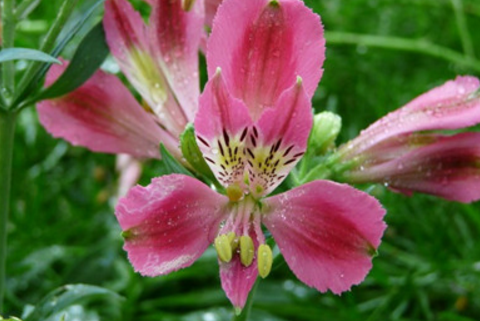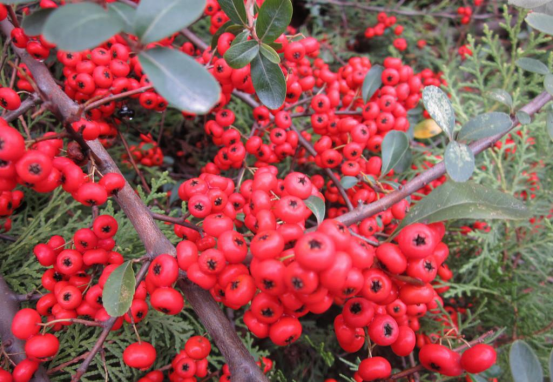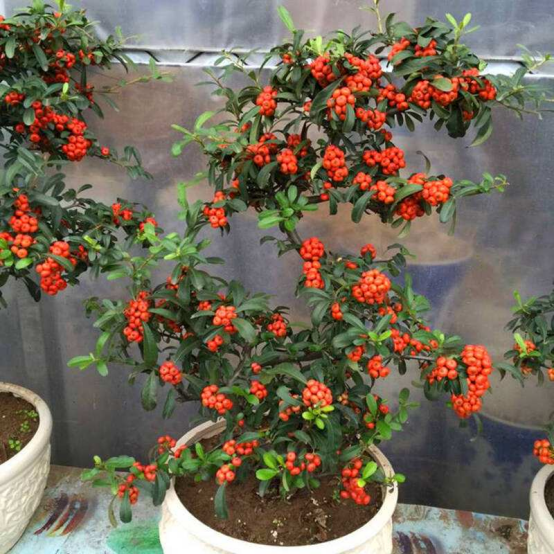Propagation methods of six-flowered flowers
Sowing and reproduction
Six flowers are usually sown in winter, sand and peat soil can be mixed as the sowing medium, the seeds gradually wake up at low temperature, and then move to a place of 15-20 ℃. After two weeks, the seeds can germinate and continue to maintain a warm environment. When the seedlings grow to four or five centimeters, they can be cultivated separately, usually in early spring.

Ramet propagation
The ramet propagation of Liuhua is in October and is carried out with ungerminated hidden buds on its rhizome. Cut the rhizome of the plant in segments, pay attention to avoid injuring the root system, stimulate hidden buds to germinate and absorb the water and nutrients stored on the rhizome until they grow into flower branches.
The Culture method of six Flowers
The six flowers are also known as Chilean lilies, Peruvian lilies and daffodils. They are perennial herbs of the family Amaryllidaceae. They are native to Chile, Peru, Brazil, Argentina and Mexico in Central America. The flowers are like cuckoos and daffodils. The stems and leaves are like lilies, which are of great ornamental value. Let's take a look at the cultivation methods of six flowers.
Ecological habits of six Flowers
Liuhua likes to be dry, afraid of too much Rain Water and high groundwater level, and the soil requires good drainage and aeration, loose and rich in humus, so PH6~PH6.5 is suitable. The suitable temperature for growth is 13C~21 ℃, in which the rhizome of 13C~15 ℃ expands best, when the ground temperature exceeds 20 ℃, the growth is poor, and the optimum temperature for seed germination is 11 ℃. It is more advantageous to germinate if the seeds are placed under the high temperature of 26-31 ℃ for one month before sowing, and then moved to the suitable temperature for germination. Sensitive to sunlight, long-day sunshine can promote flowering and increase the number of flowering, while short-day sunshine can inhibit flowering.
Propagation methods of six-flowered flowers
1. Sowing: the six flowers should be sowed in autumn and winter, and the sowing medium should be disinfected at high temperature with peat soil and sand at the ratio of 1:1, and then installed in the sowing pot. The seeds were sown from mid-October to late November, and the seeds germinated gradually after a natural low temperature of 0.5 ℃ for one month. Then moved to the condition of 15-20 ℃, about 2 weeks, the seed germination rate can reach more than 80%. After germination, the temperature was maintained at 10-20 ℃, and the seeds grew rapidly.
2. Ramet: the six flowers produce many hidden buds on the recumbent rhizome. When the external conditions are suitable, the recumbent rhizome extends in the soil, and some hidden buds germinate until they grow into flower branches. The propagation time of ramets is October. Before planting the plants, the soil should be loose, dry and wet. When ramet, first cut off the upper part of the plant from 30 cm from the ground, then dig up the plant, gently shake the surrounding soil, and the rhizome can be clearly planted on the prepared seedbed.
3. Tissue culture: common terminal buds were used as explants. After regular disinfection and sterilization, they were inoculated on MS medium supplemented with 5 mg / L 6-benzylaminoadenine and 1 mg / L naphthylacetic acid. Adventitious buds were cultured for 2 months, and then transferred to 1/2MS medium with 1 ml naphthalene acetic acid to form tubers.
The Culture method of six Flowers
1. Soil: the fertile sandy loam with good permeability should be selected in the planting site of Liuhua. The thickness of the soil layer is 50 cm and the drainage performance is good. The most suitable soil for the cultivation of six flowers is slightly acidic, so the PH value should be adjusted to about 6.5 according to the physical and chemical properties of the soil.
2. Moisture: Liuhua should have sufficient water supply and high air humidity in the exuberant growing season, and the relative humidity should be controlled at 80-85%. The hot summer is semi-dormant. Attention should be paid to controlling moisture when the temperature is low in winter.
3. Fertilizer: when planting six flowers, combined with the improvement of soil physical and chemical properties and structure, we should apply a large amount of mature organic fertilizer, such as barnyard manure, 30kg to 40kg per square meter, or add appropriate amount of calcium superphosphate as supplement. In the whole growth cycle of the plant, only base fertilizer can not meet the needs of growth and development, so topdressing should be applied in different growth periods.
4. Temperature: proper low temperature (not less than 5 ℃) is given within 1 to 2 months after planting, which is very beneficial to root rejuvenation and plant recovery. The temperature in the growing season is maintained at 8: 15 ℃, and the soil temperature is better kept at about 20 ℃ in summer. The most suitable temperature for flower bud differentiation is 20-22 ℃. In summer, in order to prevent the soil temperature from getting too high, water supply pipes and perlite can be buried underground to achieve the purpose of cooling.
5. Illumination: Liuhua is a strong positive plant, there should be sufficient light in the growing season, and the optimum sunshine hours is 13-14 hours. The natural sunshine time is short in winter and early spring, so supplementary light should be added when cultivated in protected areas. In order to save energy, the supplementary light time should be chosen when the plant has entered the vigorous growth stage. Replenish the light for 4 to 5 hours a day until the natural light reaches about 13 hours.
6. Pruning: 12-15 cm pots are commonly used in six-flowered potted plants. In mid-October, the planting depth is 3-5 cm. After planting, they are watered thoroughly, and leaf buds grow after 30 days. After the beginning of winter, the new buds grow rapidly and the stems and leaves are dense, which affects the growth of flower buds at the base, so it is necessary to sparse leaves, remove small leaf buds and retain sturdy flower buds to achieve the goal of short plants and many flowers.
7. Diseases and insect pests: Liuhua is often harmful to root rot, which can be sprayed with 65% Daimen zinc wettable powder 600 times. The flowers and branches are damaged by aphids, which are sprayed with 2000 dimethoate EC. Liuhua is not sensitive to diseases, on the contrary, aphids, thrips, mites, slugs, caterpillars, pink butterflies and nematodes are very harmful. Pythium is easy to occur when the soil moisture is too high, while the disease caused by Rhizoctonia solani is easy to occur under warm and humid conditions.
Propagation methods of six-flowered flowers
Sowing and propagation of six-flowered flowers
The sowing and propagation of Liuhua is usually carried out in winter. Sand and peat soil were disinfected at the ratio of 1:1 and then packed in a basin as sowing medium. Sow seeds from mid-October to late November. Under the natural low temperature of 0 to 5 degrees Celsius in winter, the seeds gradually wake up.
Move it to 15 degrees Celsius to 20 degrees Celsius, about two weeks, the seeds can germinate. The germination rate is more than 80%. After the seeds germinate, keep the temperature at 10 to 20 degrees Celsius. The six flowers grow rapidly. When the seedlings of six flowers grow to 4 cm to 5 cm, they should be divided. The planting time should be from February to March in early spring, and it should be noted that care should be taken not to damage the root system when planting.
Ramet Propagation of Liuhua
In addition to sowing and propagation, six flowers can also be propagated separately. The ramet propagation time of Liuhua is in October. The ramet propagation of Liuhua is the use of ungerminated hidden buds on the rhizome of Liuhua. When the rhizome of the six flowers is cut in segments, the hidden buds can be stimulated to germinate into new plants.
The rhizome of Liuhua lies across the ground, and there are fleshy roots on the rhizome, which can help Liuhua store water and nutrients. There are many hidden buds on the recumbent rhizome of the six flowers. when the conditions are suitable, the recumbent rhizome will stretch in the soil, and at the same time, some hidden buds will gradually germinate until they grow into flower branches.
Before planting the plants, make sure that the soil is loose, not dry or wet. When ramet, cut off the upper part of the plant 30 cm above the ground. If you dig up the plant, you should pay attention to avoid damaging the root system as much as possible. Gently shake the soil around the plant and plant the rhizome on the prepared seedbed. If the plant is cultivated as cut flower, the row spacing is generally 40cm × 50cm.
- Prev

Maintenance skills of bonsai firethorn
1. Hippophae rhamnoides likes dampness and fertilizer, and likes the climate with sufficient light, good ventilation and warm and humid climate. Hippophae rhamnoides likes fertilizer, so we should add cake fertilizer properly during the growing period. Hippophae rhamnoides is cold-resistant, and the temperature can be as low as 0 ℃-5 ℃ or even the root. Hippophae rhamnoides has developed root system, fast branching, rapid growth and resistance to pruning.
- Next

Modeling and making of firethorn bonsai
Firethorn bonsai should adopt the modeling method of coarse binding and fine cutting, which is generally carried out in autumn. first, iron wire or brown wire is used to roughly tie the trunk into different forms such as oblique stem or lying dry, and then it is cultivated for a period of time, and then the pile landscape layer is trimmed and shaped according to the design, so that the whole tree shape has a clear lasting appeal.
Related
- Fuxing push coffee new agricultural production and marketing class: lack of small-scale processing plants
- Jujube rice field leisure farm deep ploughing Yilan for five years to create a space for organic food and play
- Nongyu Farm-A trial of organic papaya for brave women with advanced technology
- Four points for attention in the prevention and control of diseases and insect pests of edible fungi
- How to add nutrient solution to Edible Fungi
- Is there any good way to control edible fungus mites?
- Open Inoculation Technology of Edible Fungi
- Is there any clever way to use fertilizer for edible fungus in winter?
- What agents are used to kill the pathogens of edible fungi in the mushroom shed?
- Rapid drying of Edible Fungi

